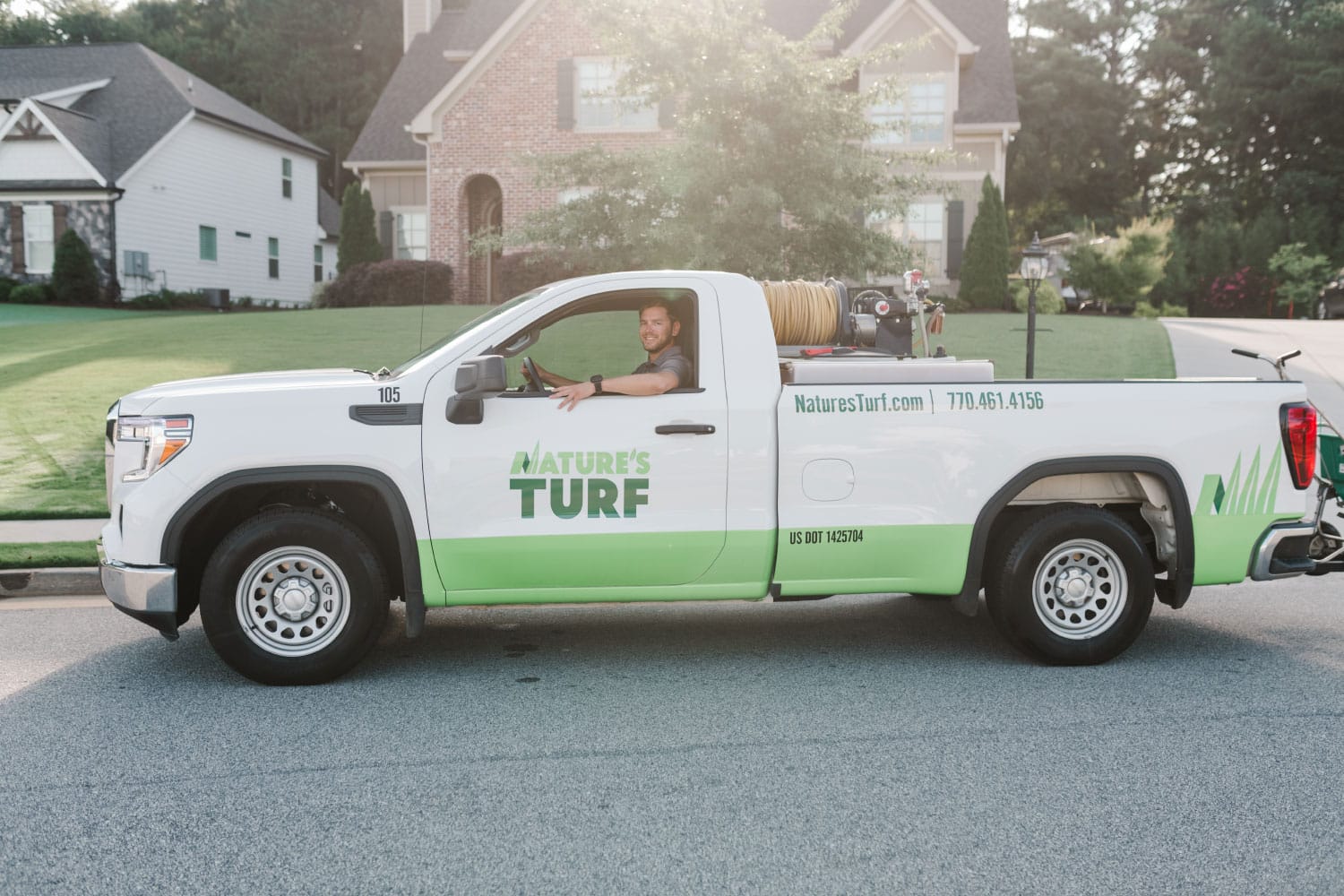After the holidays are over, we sort of enter the winter slump. The pretty lights and festive decorations are gone, and it’s just cold and dreary outside. To curb those winter blues, you may be looking down the line, eagerly awaiting a lush lawn full of healthy, green grass. We at Nature’s Turf are right there with you! Here are 5 ways to prepare your lawn for its best season yet.
1. Prep and Maintain Your Mowing Equipment
You have to maintain your cars to ensure their safety and dependability; it’s important to maintain your mowing equipment for the same reasons. There are similarities between our automobiles and mowers, and some of the maintenance routines, such as oil changes, are similar. These similarities cease at the business end of your mower, though. It’s also important to keep your mower blades sharp. Sharp blades mean a clean cut. Clean cuts improve plant health and the overall beauty of your lawn. Dull blades rip leaf tips, creating long, tan injuries and making the lawn appear lighter.
2. De-Winterize Your Irrigation System
As spring approaches and the last freeze has passed, it’s important to make sure the irrigation system is in a similar or better condition than it was when it was drained. Irrigation systems are generally turned off and purged for the winter months. This helps keep your system safe from freeze damage. When our turfs are dormant, they don’t generally require supplemental irrigation.
Once the system is full again, run each zone, taking notes on the performance. Make sure there aren’t stuck heads, damaged heads, trash in the nozzles, or valves that have gone bad to ensure uniformity as our lawns green up.
3. Clear Any Accumulated Debris from Your Lawn
Removing debris such as leaves, sticks, and pine cones from your lawn is beneficial for your grass and your mower. An absence of debris allows for better air circulation, reduces the incidence of disease, and enables the new shoots and leaves to emerge from the roots. Cleaning up sticks and pine cones limits the mechanical injury that may occur while mowing and reduces damage to the fresh blades you just installed.
If you have a lawn service, you’ve likely been on top of this all winter. It’s worth a good clean sweep to make sure there aren’t any residual leaves, sticks, pinecones, or other debris on your lawn.
4. Reset Your Cut Heights
Mowing weekly at a height of 1.5-2 inches for our bermuda and zoysia lawns is important, and doing it with a healthy mower ensures the best quality cut. Mowing is a polarizing topic. For some, it’s relaxing. For others, it’s a torturous requirement. It may seem more enjoyable for everyone knowing that good mowing practices are among the most important things you can do to grow beautiful, dense, healthy turfgrass.
Right before green-up, or just as you see your first signs of green, it’s time to reset those cut heights. Maintaining that canopy through dormancy helped stave off weeds through winter, but now it’s time to get those tan leaves out of the way for the new green ones.
For zoysia lawns, that means a simple height reduction. Heights of 1.25-1.5” will help get rid of the dormant tissues without threatening damage. While you may hear about scalping in bermuda lawns, it can create undesirable damage to zoysia.
Bermuda can be scalped if you desire, but it isn’t completely necessary. If you do decide to scalp or reduce your cut heights significantly, bagging and removal is advised. The stems cut during this process will contribute to thatch accumulation. A simple height reset is a functional and practical strategy in bermuda as well.
5. Be Patient (The Hardest One!)
Green- up is a process that takes time, and this process is driven by soil temperatures. Being patient is not easy; warm spring days, flowers blooming, and bees buzzing can make it feel like the grass should be green. Soil temperatures change much more slowly than air temperatures. It takes long, warm, sunny days a period of time to warm our soils sufficiently for warm-season root systems to begin producing new leaves and stems.
Fertilization is a part of this process but cannot change when our bermuda and zoysia yards break dormancy. They can only be present for utilization when dormancy has broken. Timing for this is different every year and wholly dependent on weather patterns.
Bonus: Team Up With Nature’s Turf!
Lawn care can be a bit confusing. So many products with so many uses. Which fertilizer is for which time of year? Does this weed control product stop weeds or only control weeds that exist? When does limestone application happen? It’s a lot to think about. Teaming up with a strategic partner like Nature’s Turf gives your yard access to people, products, and procedures that are difficult or expensive to attain otherwise. Give us a call at 678-831-6343 or shoot us an email at info@naturesturf.com. We’d love to discuss how our programs fit your yard.








